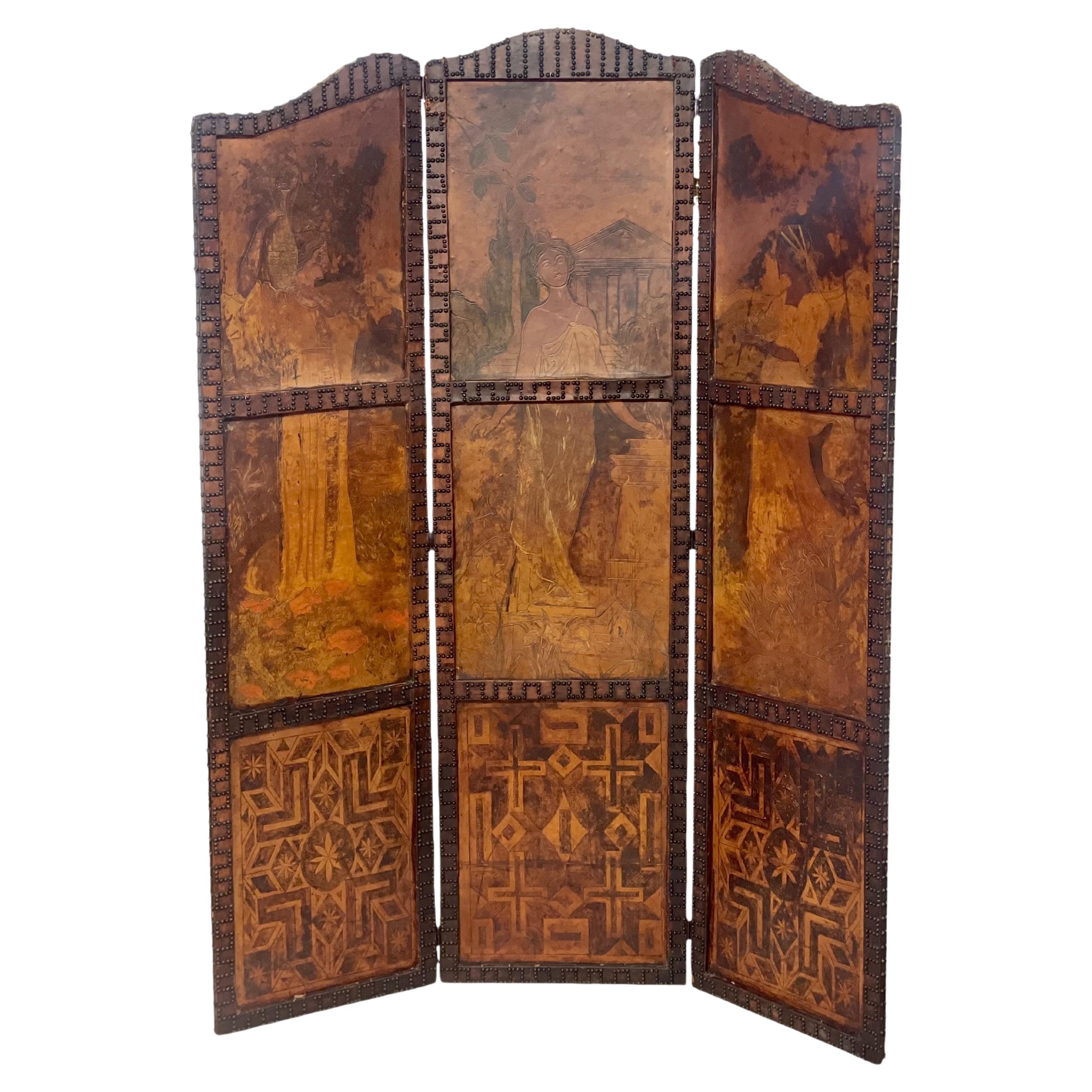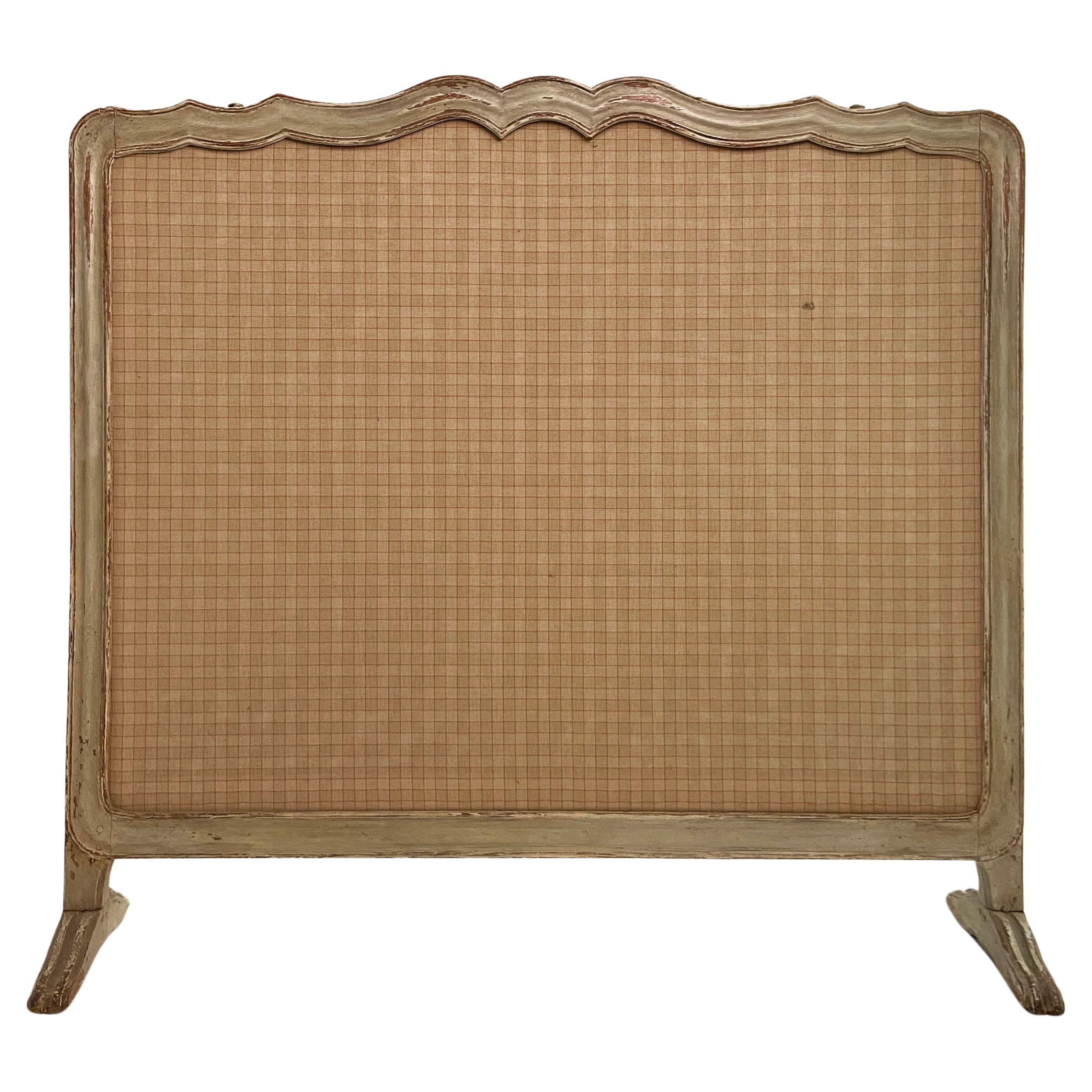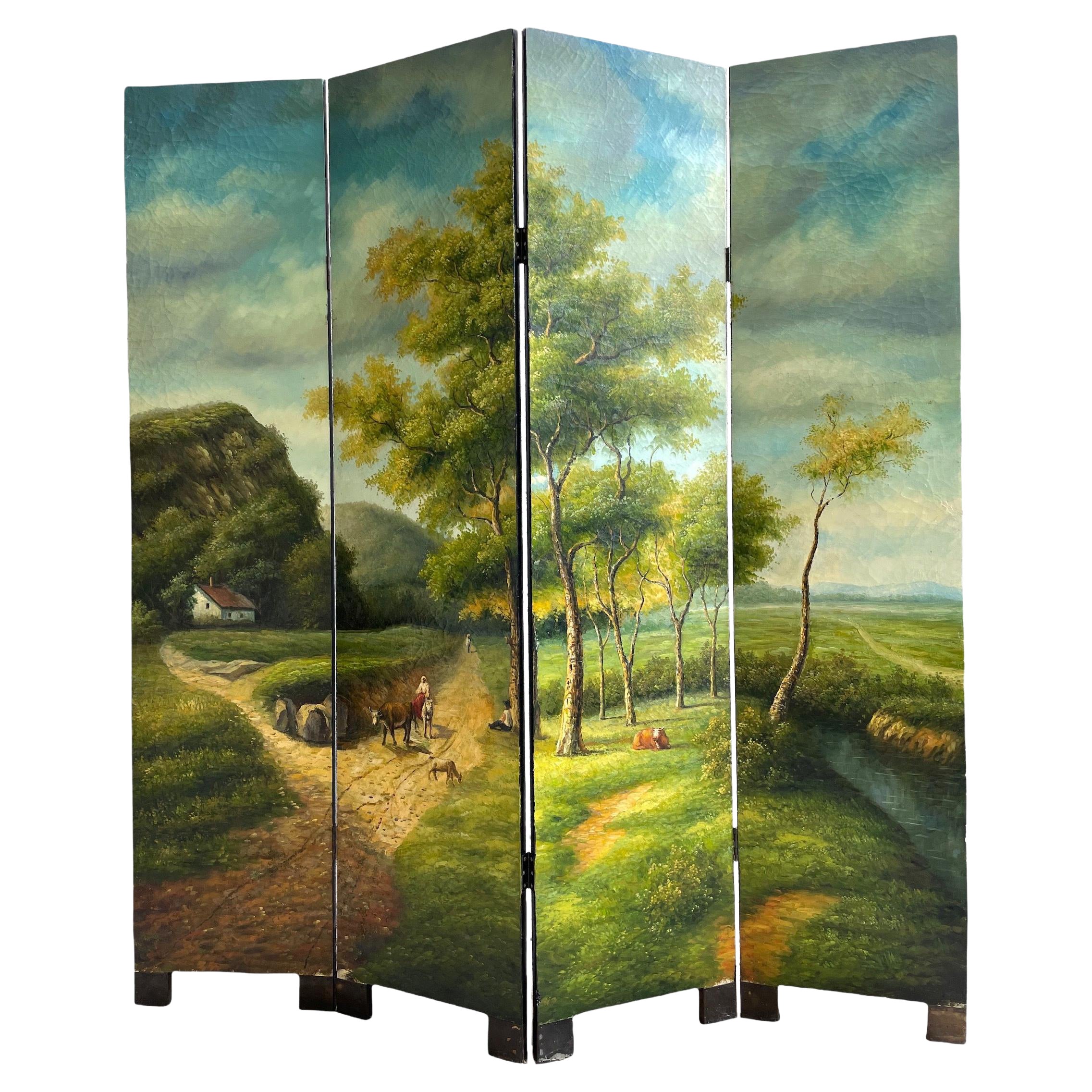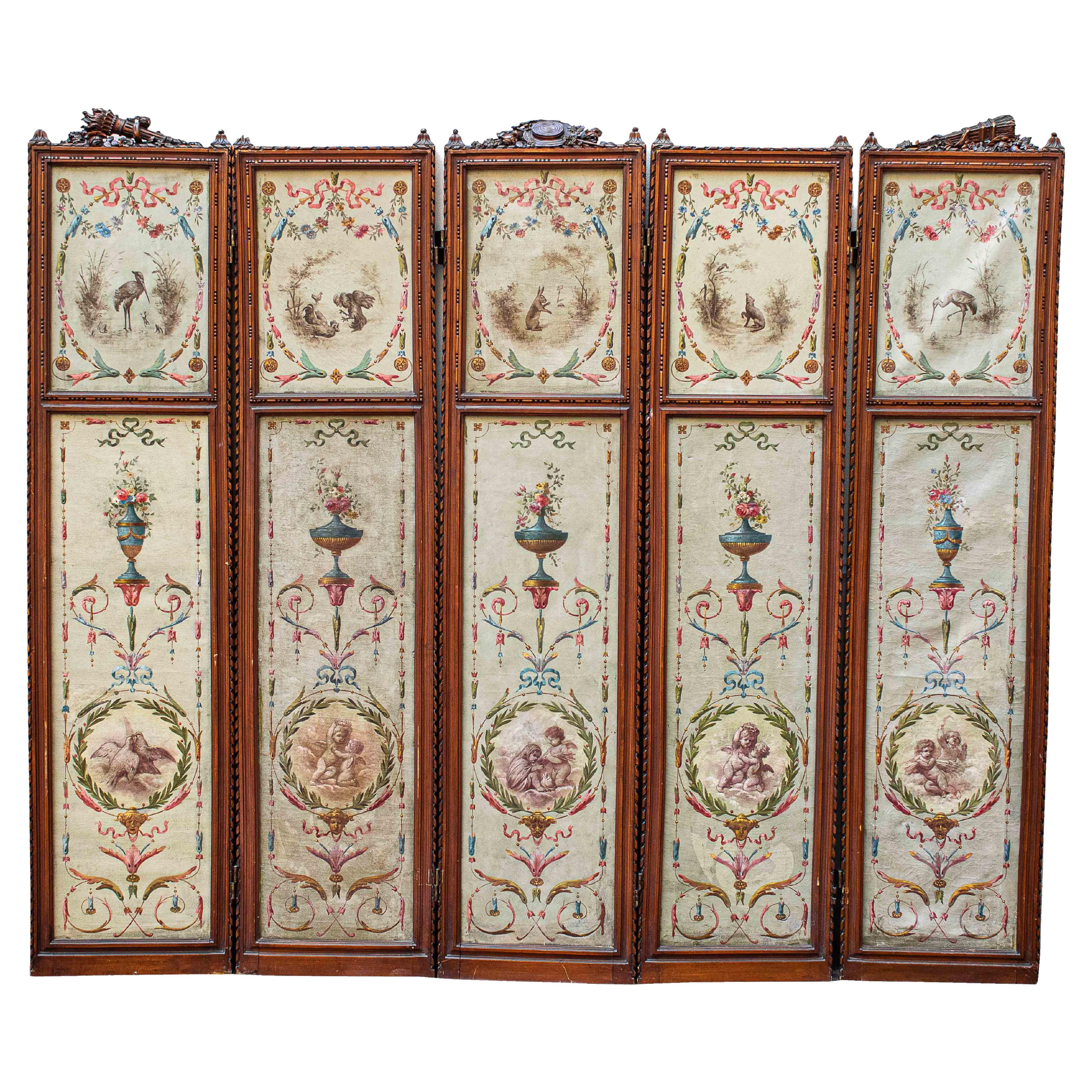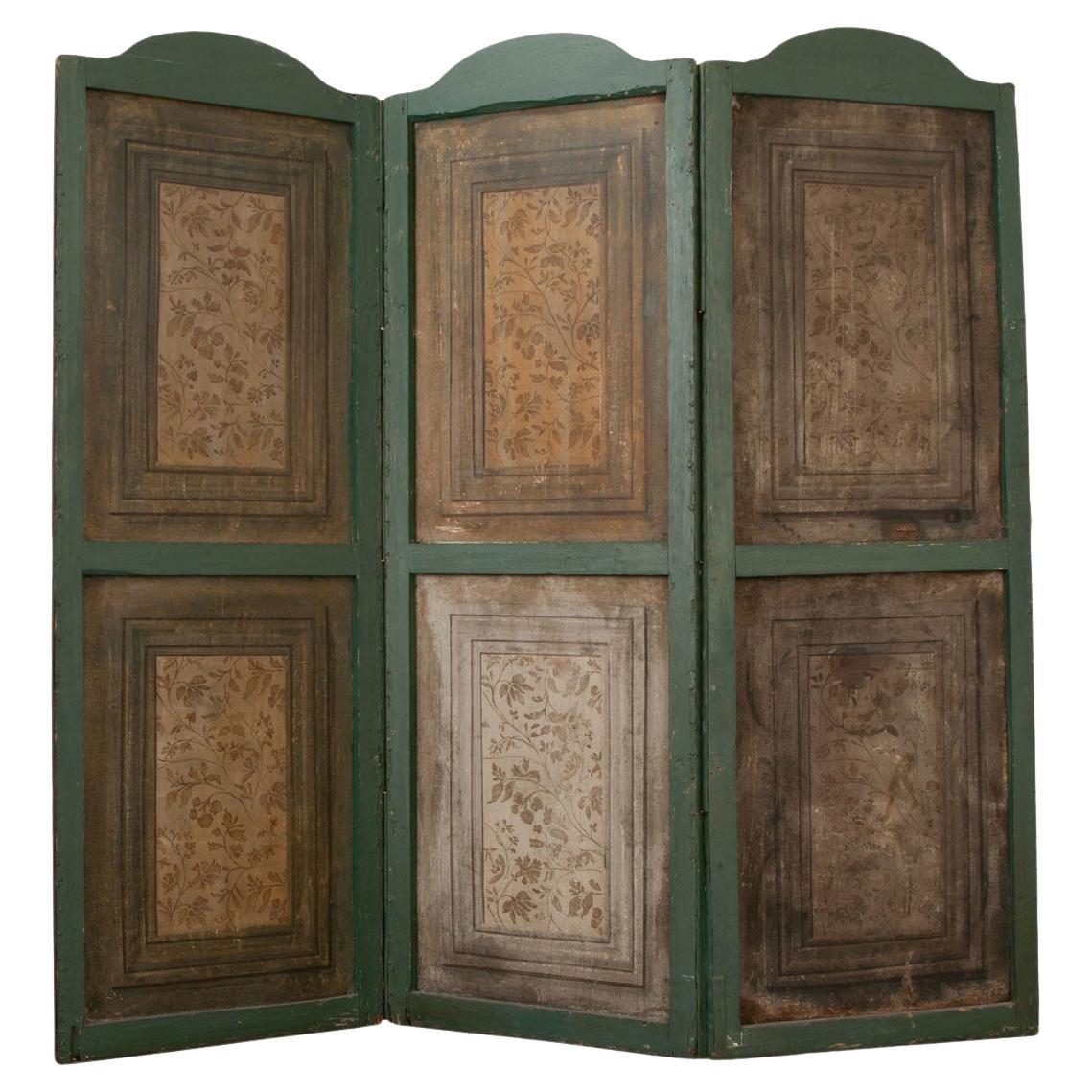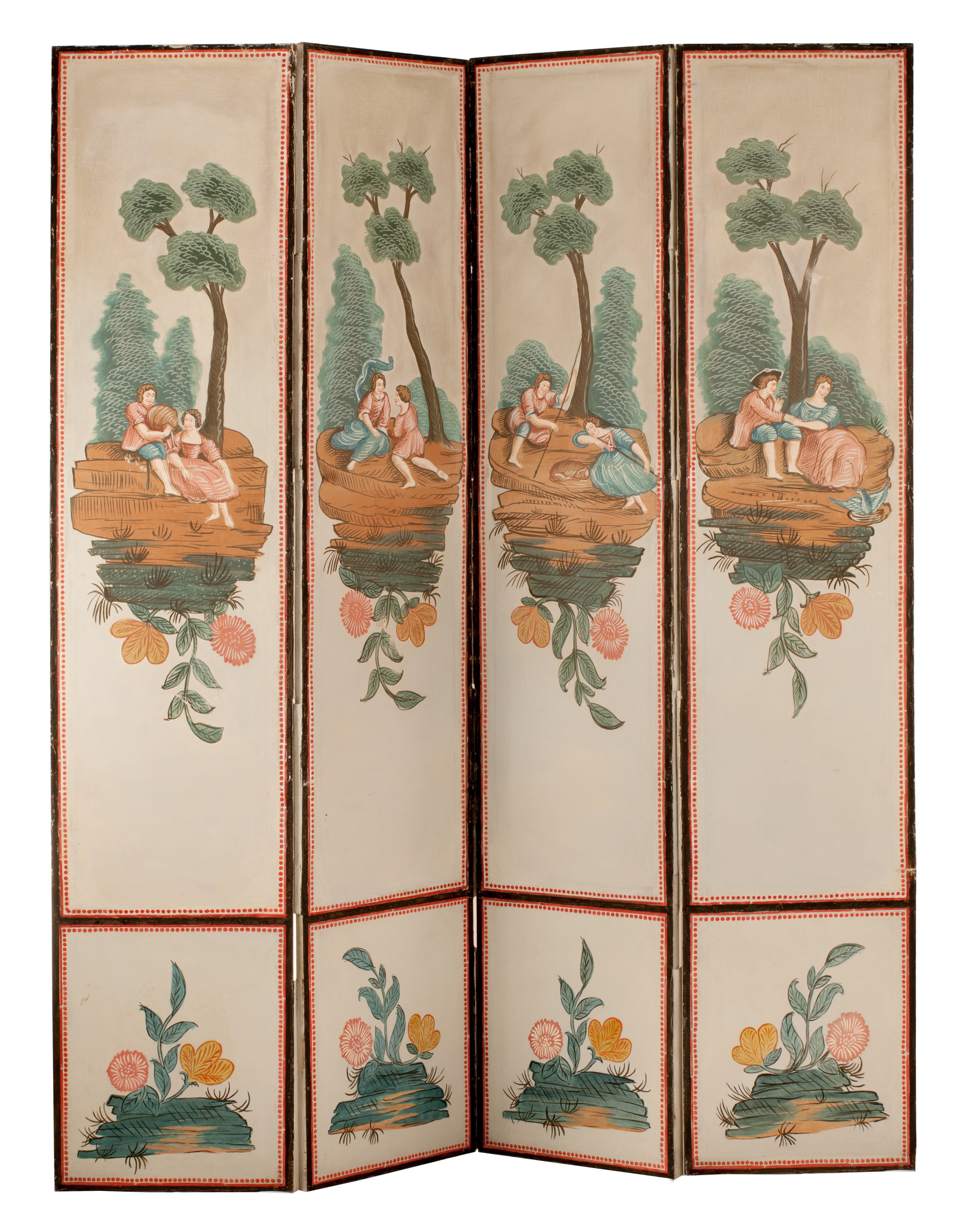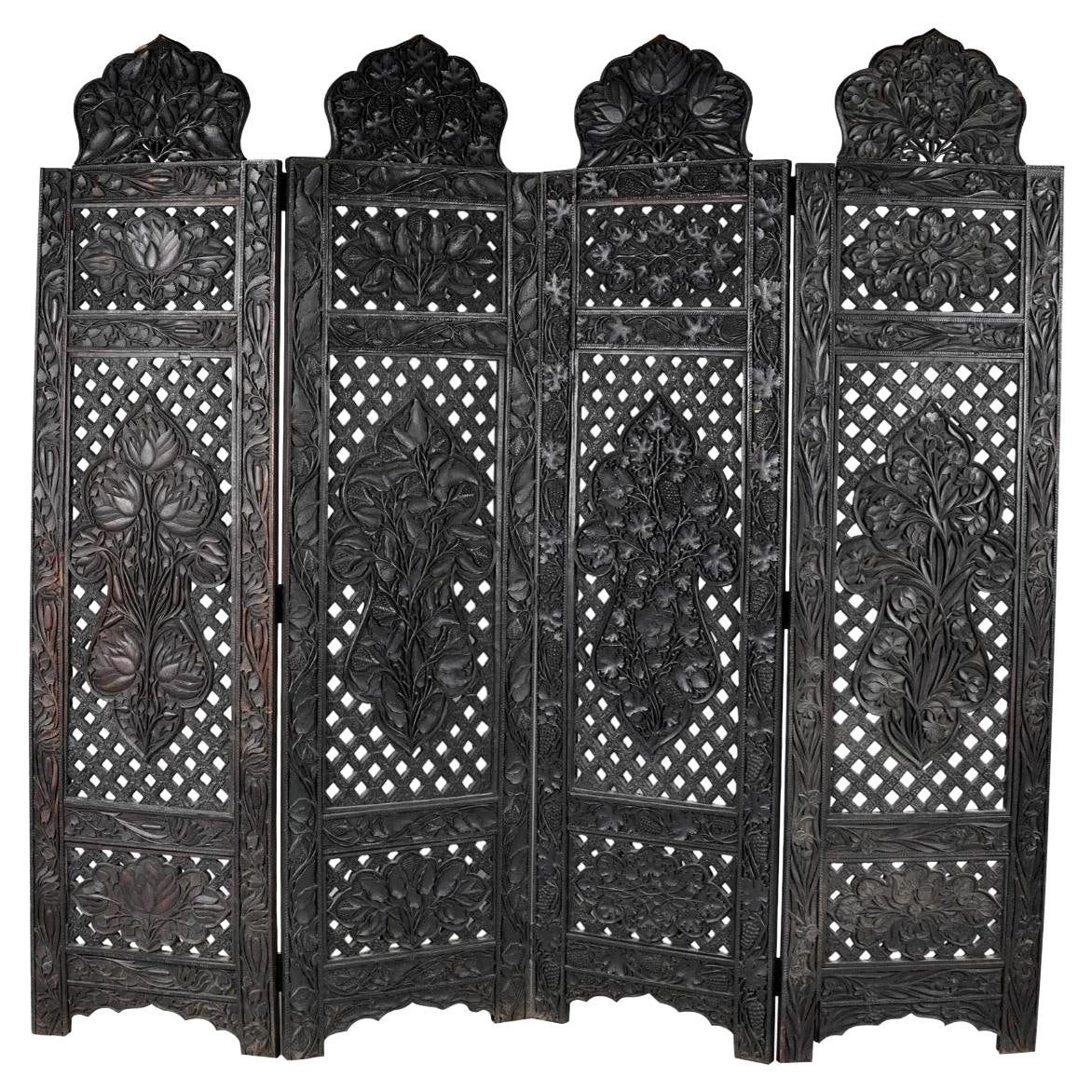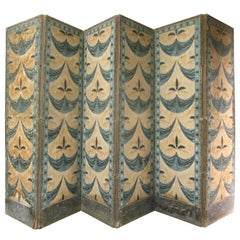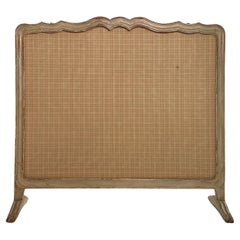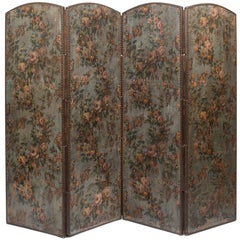
French Screen Paper on Leather from the 19th Century Decorated with Flowers
View Similar Items
1 of 6
French Screen Paper on Leather from the 19th Century Decorated with Flowers
About the Item
- Dimensions:Height: 66.93 in (170 cm)Width: 1.58 in (4 cm)Depth: 94.49 in (240 cm)
- Materials and Techniques:
- Place of Origin:
- Period:
- Date of Manufacture:19th Century
- Condition:Wear consistent with age and use.
- Seller Location:Lisbon, PT
- Reference Number:Seller: 8651stDibs: LU103864915213
You May Also Like
- Large 19th Century French, Six-Panel Antique Paper ScreenLocated in Isle Sur La Sorgue, VaucluseWonderful six part, double-sided folding screen. Block-printed paper on canvas. Beautiful colours. Faux-marble skirting. Rare. Dimensions below are for the folded screen. Fully ex...Category
Antique 19th Century French Screens and Room Dividers
- 19th Century French Fireplace ScreenLocated in Wilton, CTUsed during warmer months to cover the opening of a fireplace, this rare, 19th Century French fireplace screen retains its antique original fabric. The design is identical on both si...Category
Antique 19th Century Screens and Room Dividers
MaterialsFabric, Wood
- French Provincial 19th Century Screen 4 FoldLocated in palm beach, FLFour-leaf wooden screen. Oil on canvas represents a French countryside scene in the 19th century. Magnificent cloudy blue sky and green landscape, traditional house, animals, and a f...Category
Antique Mid-19th Century French Paintings
MaterialsWood, Paint
- French 19th Century Painted Folding ScreenLocated in Baton Rouge, LAA French painted folding screen from the 19th Century. This antique folding screen features four tall panels with curved tops. On one side you’l...Category
Antique 19th Century French Neoclassical Screens and Room Dividers
MaterialsCanvas, Wood
- 19th Century French Hand Painted ScreenLocated in Asheville, NC19th Century Hand Painted Canvas Four Panel Folding Screen with charming French Provincial scenes on front and stylized stenciled flowers on back, named inscription on sideCategory
Antique 19th Century French Country Screens and Room Dividers
MaterialsWood
- 19th Century Screen with Grotesques Painting Oil on CanvasLocated in Milan, ITNineteenth century Screen with grotesques Measures: (5) Oil on canvas, 158 x 185 cm The screen analyzed is made up of five panels, each divided into two panels decorated with elements of the natural world on the upper level and grotesque decorations on the lower level. The grotesque is a type of ornamentation often used in painting, sculpture and minor arts, for example in ceramics and tapestries, developed at the end of the 15th century. The five upper panels refer to as many famous Aesop's fables, i.e. the first panel depicts the fable of The frogs ask for a king, the second panel instead represents the roosters and the partridge, the third panel has as its protagonist the famous fable of the Hare and the tortoise, while the fourth The crow and the fox, while the last panel probably represents the episode of the Fox and the stork. The screen owes its name to its singular and ancient origin; after the discovery of these decorations in 1480 in Nero's Domus Aurea, a palace that had been buried for centuries, under the pretext of imitatio antiquitatis, they were re-proposed in contemporary palaces. The palace of Nero was visited by many explorers, who descended into it and had the impression of being inside a cave, which is why, as Benvenuto Cellini tells us, these particular decorations rediscovered there were called grotesque. The great success that the grotesques had is testified by Raphael's decorations in the Vatican...Category
Antique 19th Century Italian Screens and Room Dividers
MaterialsCanvas, Wood
$2,464 Sale Price20% Off
